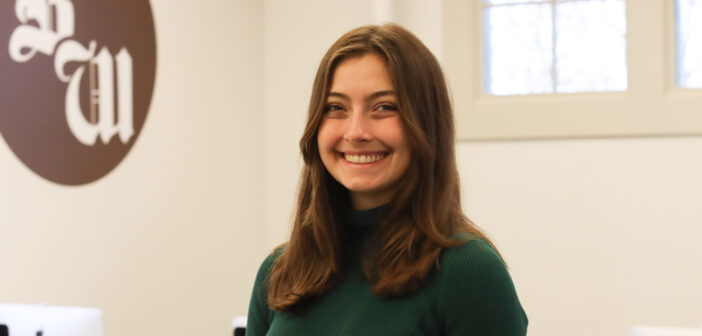I devoted the majority of my junior year of high school to my AP European History course. I spent hours upon hours taking notes and studying content spanning European social, political and economic issues from the Middle Ages to the 20th century.
In the class, we learned a quarter of what the AP exam — which would potentially earn us college credit and exemption from introductory college courses — would be testing us on European art. I studied the works of every prominent artist of the Renaissance, Baroque, Rococo and Neoclassical periods.
Through this exposure, I found a love for Impressionist art. One of my favorite artists ended up being a cliche: Claude Monet.
Following my high school graduation, I was fortunate enough to attend an art club field trip to France, where my close friends and I spent a day painting at the lily ponds of Monet’s residence in Giverny.
The one thing possibly cornier than deeming Monet a favorite artist of mine may be priding myself in being an aesthete, which according to Collins English dictionary, is defined as someone who appreciates artwork. Because who doesn’t?
In the past few years, I have eagerly pinpointed and visited any art gallery in the major cities I’ve visited. I went to the Denver Art Museum when I visited my uncle this summer; I visited three art galleries when I went to Amman, Jordan, for my Iacocca summer internship; and over spring break, I visited the National Art Gallery of Ontario when my roommates and I traveled to Toronto.
As I took my time experiencing the art in each of these unique spaces, I realized my wandering subconscious tended to take me only to familiar places I recognized. I stayed in a space of familiarity when I only sought out Renaissance or Impressionist art in museums, and it limited me from fully appreciating all a museum has to offer.
A week and a half ago, I visited the Metropolitan Museum of Art in New York City. For the first time, I found myself intrigued by the Eastern Asian art exhibit. I admired the ancient ink scroll paintings and Buddha sculptures rather than the same two-dimensional Renaissance art I had studied religiously. I left feeling fulfilled and rejuvenated by the new forms.
Recently, I’ve become most interested in contemporary and abstract art rather than realism and antiquity.
My visit to the Denver Art Museum was a catalyst for this shift in my admiration — thanks to a specific limited-time exhibition called “Disruption.”
According to the museum’s website, “Disruption” consisted of mediums including photographs, mixed-media, paintings and sculptures to communicate artists’ messages centering the theme of challenging norms with “disruptive action.”
“The works in Disruption question the past, the world today, and the social spaces we navigate — upending political narratives, questioning our rights of freedom and access, subverting notions of identity, contesting social norms, critiquing consumer culture, and imagining dystopian alternate realities,” the site reads.
I most vividly remember walking into a grand white-walled room full of Buddha statue replicas with their heads cut off and replaced with floating heads of Western pop culture cartoon figures.
The piece, named “Headless,” was by Michael Joo. The enigma was startling and thought-provoking, leading me to read the didactic panel, from which I learned the piece spoke to colonialization’s harmful effects of erasing native culture through Eurocentrism.
The political undertones and hidden meanings of modern art were puzzles I loved interpreting. I wanted more, and I fed off the intrigue of the major statements and provocative nature of some of the works.
I wanted to uncover the sociopolitical contexts that informed the work — just as I did in high school for European art — but now, in a new, modern lens that relates to current events I see impacting the world.
The next stop in my art museum journey is no doubt the Museum of Modern Art in New York City.
No matter how many art museums I cross off my bucket list, I know I am going to keep looking, intentionally, for art I don’t understand.
People should not only expand their horizons in the art they seek, but also what they consider to be art. Art does not exist according to one set of cultural values and standards — some art is made to honor religions, some for utilitarian purposes and some to be destroyed.
Appreciation for these different forms, mediums and eras comes with choosing to be curious and leaving your comfort zone. From someone who decided to break the norm of their typical museum path in the past year, there is only value, knowledge and perspective to be gained.






Comment policy
Comments posted to The Brown and White website are reviewed by a moderator before being approved. Incendiary speech or harassing language, including comments targeted at individuals, may be deemed unacceptable and not published. Spam and other soliciting will also be declined.
The Brown and White also reserves the right to not publish entirely anonymous comments.